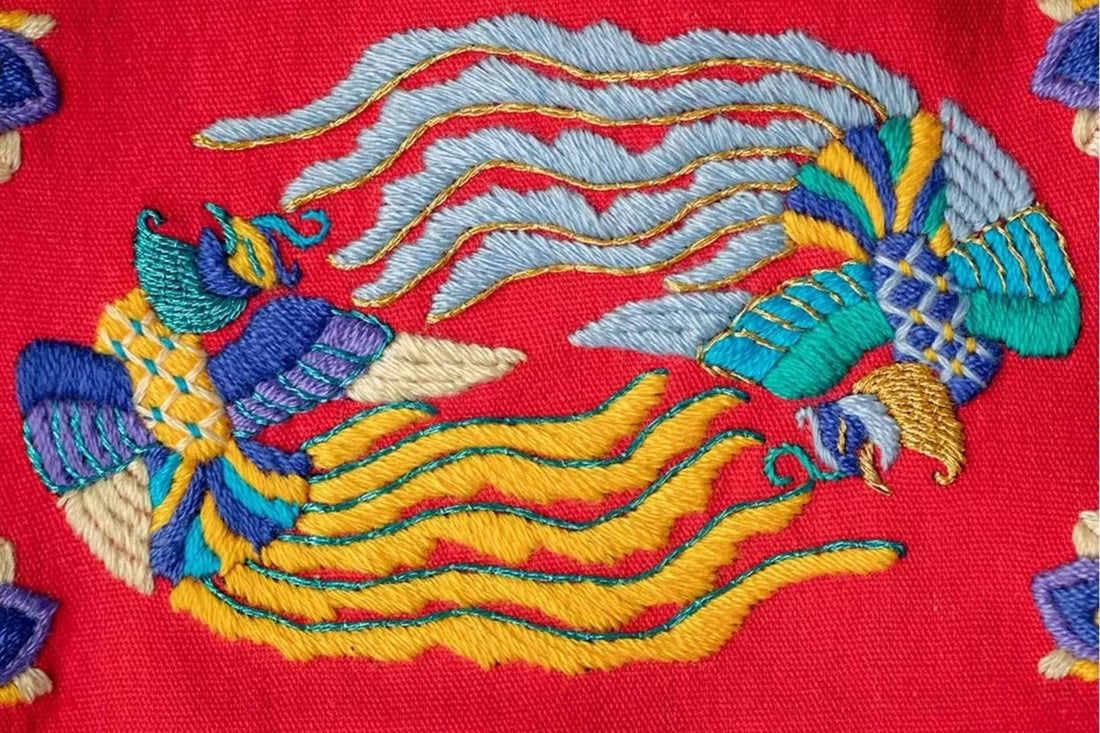
5 Easy Embroidery Stitches for Traditional Chinese Designs
Share
Embroidery has been a treasured art form in China for thousands of years, symbolizing beauty, patience, and cultural storytelling. Whether you’re just starting or looking to refine your skills, learning a few simple stitches can bring traditional Chinese designs—like tigers, dancing lions, and auspicious symbols—to life.
If you’ve purchased one of our DIY embroidery kits inspired by Chinese culture, these beginner-friendly stitches are perfect to get you started.
1. Satin Stitch – Smooth & Elegant
The satin stitch is ideal for filling shapes with solid blocks of color. In Chinese embroidery, this stitch is often used to create the smooth surfaces of flowers, animals, and decorative motifs.
✨ Tip: Keep your stitches close together and consistent in direction to achieve a glossy, satin-like finish.
Perfect for: Lotus petals, lion manes, or the flowing robes of traditional figures.
2. Back Stitch – Outlines & Details
The back stitch is simple but powerful, often used to outline designs or add fine details. Many Chinese folk designs rely on strong outlines to define symbolic creatures and patterns.
✨ Tip: Use black or gold thread for outlines to make your motifs pop.
Perfect for: Defining a dancing lion’s face, the curves of a dragon, or the edges of a tiger.
3. Chain Stitch – Decorative Borders
The chain stitch creates a lovely linked effect, resembling tiny loops. It’s frequently seen in Chinese embroidery to add borders, vines, and flowing patterns.
✨ Tip: Try using vibrant red or gold thread—both considered auspicious colors in Chinese culture.
Perfect for: Decorative tassels, swirling clouds, or framing symbols of luck.
4. French Knots – Beads & Texture
The French knot adds a three-dimensional effect that resembles tiny beads. Traditional Chinese embroidery often incorporates knots to mimic pearls, flower centers, or jewel-like accents.
✨ Tip: Wrap the thread around your needle once for small knots, or twice for a fuller look.
Perfect for: Eyes of animals, starry details, or embellishments on costumes.
5. Split Stitch – Strong Lines & Shading
The split stitch creates a textured line that’s perfect for both outlines and shading. It’s widely used in Chinese embroidery to blend colors seamlessly or to add strength to design lines.
✨ Tip: Use this stitch with gradient thread colors to achieve a shaded effect.
Perfect for: Tiger stripes, flowing calligraphy, or dragon scales.
Bringing It All Together
By mastering these five stitches—satin, back, chain, French knot, and split stitch—you can recreate the essence of traditional Chinese embroidery with ease. Each stitch not only enhances your craft but also connects you to centuries of cultural artistry.
And the best part? You don’t need to search for materials. Our DIY Chinese embroidery kits come with everything you need: high-quality fabric, colorful threads, needles, and step-by-step instructions (plus tutorial videos). Designs like the Tiger with Five Poisons Embroidery Kit or the Dancing Lion Embroidery Kit are perfect projects to practice these stitches while creating something meaningful.
✨ Ready to try? Explore our DIY Chinese Embroidery Kit and start stitching your own piece of cultural heritage today.
